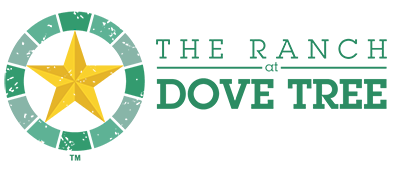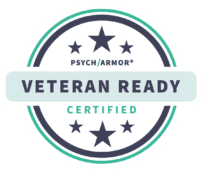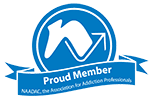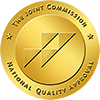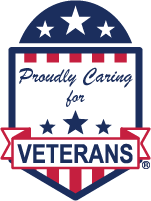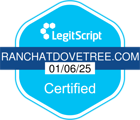By Cristina Utti
Many people with addiction started using drugs or alcohol as a teenager.
Watching your child struggle with an addiction is heartbreaking, no matter what the age. It takes a lot of patience and strength to seek help because there is a lot of work involved for both the child and the parent. Seeking treatment during the school year can disrupt academic and athletic endeavors. Fortunately, there are many options for attaining drug treatment while in school.
The steps for finding and getting into treatment are as follows:
- Assessment – The first step begins with an initial assessment by an addiction expert. It is of utmost importance to be totally honest as to the severity of the addiction. At this time a diagnosis will be made. A plan for the best course of action to take to begin recovery will be discussed.
- Detoxification – Detoxification is the period of time necessary for the drugs/alcohol to leave the body. Detox may be medically supervised depending upon the substance and duration of use. Withdrawal from alcohol and heroin can be fatal without supervision. Other addictions may not need to be medically supervised. Detox needs will be reviewed at the time of assessment.
- Treatment – The actual entry into treatment begins after the withdrawal and detox period. The best type of treatment is catered to the individual, the type and severity of addiction, and the specific situation.
There are three main types of treatment:
- Inpatient treatment – Inpatient treatment requires the individual to reside in the facility for a certain amount of time. It includes detox, and increases the chance of long-term recovery when coupled with a discharge treatment plan. Some high schools and colleges may be willing to work with students who go to inpatient treatment. It is a good idea to contact the school to find out the school’s policy.
- Partial Inpatient Treatment – Partial inpatient treatment is a mix of inpatient and outpatient care. It requires the student to attend daily treatment sessions for up to 15 – 20 hours per week, but they do not reside at the facility. This enables them to keep up their classes and studies while receiving treatment.
- Intensive Outpatient Treatment – Outpatient treatment is the most flexible treatment. Individuals are not required to stay at the facility or put in long hours during the week. Outpatient typically includes group meetings and meeting with an individual counselor. Although the most convenient and accommodating, it is not always the most effective.
Aftercare is often overlooked. Parents, and even the teenager with the addiction, would like to think that they are “cured” once they have completed the drug treatment plan. For teenagers and college students, their school environment is where the threat of relapse is strongest. A study done by Spear and Skala shows that virtually all adolescents who returned to their old school were offered drugs on their first day back. Upon return to the same school, the student is back in direct contact with peers with whom they spent their time. Peer deviance is among the most important risk factor for relapse.
Due to the risk of falling back in with old peers, peer pressure, and the difficulty of finding a new, sober group of friends without being ostracized, attaining an education is a huge factor for those students newly sober. For this reason, schools designed to help the newly sober teen were opened in the late 1980’s.
“According to White and Finch (2006), the first wave of recovery high schools opened between 1987 and 1998. These schools were truly experimental in nature, with the goal of “sober schooling” but no existing blueprints to guide them. Ecole Nouvelle (now Sobriety High) in Minnesota was established in 1986 and opened in a community center with four students and one teacher in 1987. Other early recovery high schools included several Minnesota schools: PEASE (Peers Enjoying a Sober Education) Academy (1989), the Gateway Program (1992), the Arona Campus (now Arona Academy) (1995), YES (Youth Education Sobriety) (1997, now closed), ExCEL Sober School (1998, now closed), and the Aateshing Program (1998). Early programs outside Minnesota included Unity High School in Phoenix, AZ (1992, now closed), Recovery High School in Albuquerque, NM (1992, now closed), Phoenix Academy in San Mateo, CA (1992), Thoreau High School in Woodland Hills, CA (1996), Oasis Academy (now Community High School) in Nashville, TN (1997), Santa Rosa (CA) Clean & Sober High School (1998), and the Summit School in Spokane, WA (1998, now closed).”
Recovery schools provide a sober educational environment where the student can learn and thrive. If there is not a recovery school in your area, here are some important points to remember as you assist your child through the process of recovery:
- No one treatment is right for everyone.
- Addiction is a disease that effects brain patterns and behavior. Give time to heal.
- Effective treatment is treatment that addresses all of the individual’s issues. Drug and alcohol use are but symptoms of deeper underlying problems.
- Staying in a treatment program long enough to change thinking and behavior patterns is important.
- Relapse prevention education and counseling should be ongoing.
Once the decision has been made for your child to get help with their addiction, you will both have a long road ahead. With the proper guidance and tools, all of the effort and work put in will manifest into a beautiful life. Do not hesitate to call a professional at the first sign of addiction. Waiting and hoping things will change will only bring more suffering for all of those involved.
Contact The Ranch at Dove Tree for more information on addiction treatment at 806.307.2003. Our admissions professionals are available 24/7.
References:
DrugFacts: Treatment Approaches for Drug Addiction. (nd.). Retrieved March 2016.
“Recovery High Schools. A Descriptive Study of School Programs and Students.”
Publications: Research Reports (nd.). Retrieved March 2016.
